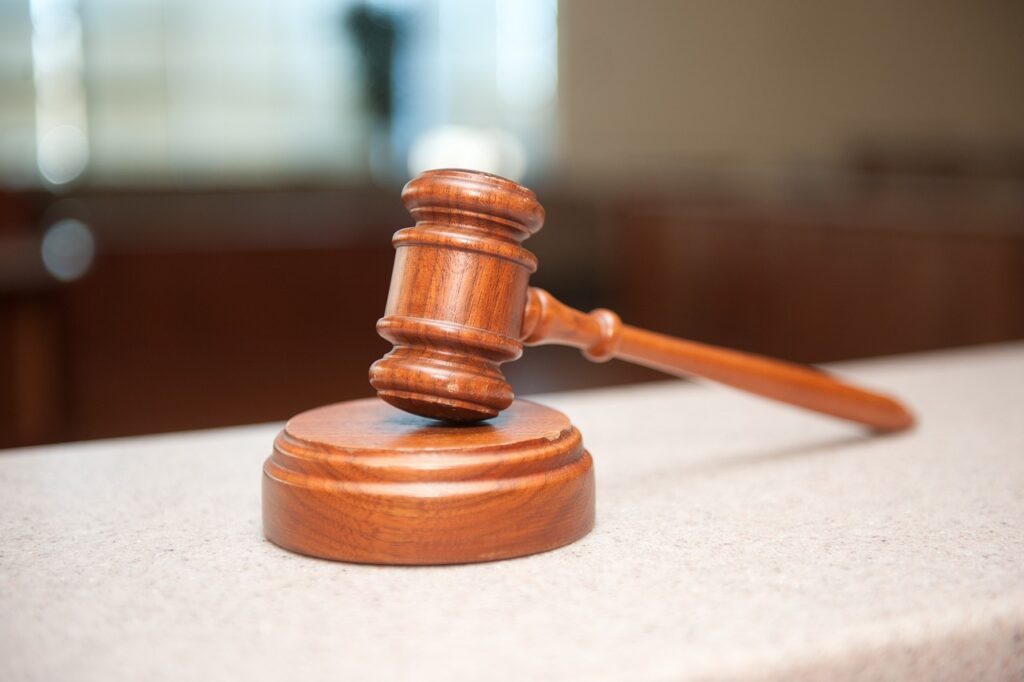Published On: September 25th 2025
Authored By: Apoorva Sharma
Department of Laws, Panjab University Chandigarh
INTRODUCTION
Privacy is now recognized as a fundamental right under Article 211of the Indian Constitution. The right to privacy safeguard individuals from unnecessary intervention either by the government authorities or private companies. Through constitutional interpretation in numerous significant rulings by the Supreme Court, the principle of privacy started to gain wider recognition in India. One such prominent ruling is People’s Union for Civil Liberties (PUCL) v. Union of India2, famously referred to as the telephone tapping case.
A crucial turning point in the evolution of Indian privacy law was reached in the landmark case of People’s Union for Civil Liberties (PUCL) v. Union of India. It addressed the escalating concerns about potentially violating individuals constitutionally guaranteed fundamental rights and illegal telephone tapping by government authorities. The main issue in the case addressed whether the Indian Telegraph Act, 1885 provisions, especially Section 5(2), were constitutionally valid and provided adequate safeguards against the State’s abuse of its surveillance powers. The case assumed an increasing significance in the context of striking a balance between the demands of national security and individual liberty. The decision of the Supreme Court in this case established significant guidelines to control phone tapping and upheld the constitutional integrity of the right to privacy, which subsequently served as a basis for other privacy jurisprudence, especially in the 2017 Puttaswamy ruling.
BACKGROUND
The case concentrates on how government authorities violated individual’s fundamental rights, mainly Article 19(1)(a)3and Article 21, by tapping their phones. A Public Interest Litigation (PIL) filed by the People’s Union for Civil Liberties (PUCL) challenging the constitutional validity and unrestrained powers of Section 5(2) of the Indian Telegraph Act, 1885, which authorizes the surveillance of messages of individuals under certain conditions. In 1990 it was alleged that more than 800 telephone lines were tapped without the necessary legal approval. By this revelation, serious concerns over lack of monitoring procedures and procedural safeguards were raised. Citizens expressed concerns that these practices could be used to crush dissenting opinions, infringe fundamental rights, and invade individual privacy.
PUCL contended that the frequent tapping of telephones without the procedural safeguards and clear legal framework violates the fundamental rights safeguarded by Article 19(1)(a), freedom of speech and expression, and Article 21, i.e., the right to life and personal liberty of the Indian Constitution.
FACTS
The case can be traced back to the growing concerns about the unfettered and arbitrary use of telephone tapping power under Section 5(2) of the Indian Telegraph Act, 1885. In the 1990s numerous public disclosures and media reports revealed that the phones of several well-known journalists, activists, and political figures were tapped illegally. This practice was viewed as a breach of an individual’s privacy and a direct threat to civil liberties and democratic accountability. PUCL, a human rights organization, filed a petition under Article 32 of the Indian Constitution and challenged the constitutional validity of Section 5(2) of the Indian Telegraph Act, 1885, which allows telephone interception in certain situations, such as in the interest of public emergency or in the interest of public safety.
PUCL contended that the provision lacked procedural safeguards and was broad in nature, which makes it prone to misuse by government authorities. In the absence of stringent regulatory control, phone tapping breaches the fundamental rights, especially the right to privacy, which is an
indispensable part of the right to life and personal liberty guaranteed under Article 21, and freedom of speech and expression under Article 19(1)(a) of the Indian Constitution. The case raised a significant constitutional issue regarding the extent and limitations of state power in relation to an individual’s fundamental rights. It has also highlighted the need for a robust legal framework to govern surveillance practices and guarantee accountability.
ISSUE
In this case, the main issue before the court was
Whether Section 5(2) of the Indian Telegraph Act, 1885, which allows telephone tapping under certain situations in the absence of sufficient procedural safeguards, violates the fundamental rights, especially the right to freedom of speech and expression guaranteed under Article 19(1)(a) and the right to life and personal liberty under Article 21?
In particular, the Supreme Court was asked to rule on
- Whether telephone tapping results in the violation of the right to privacy protected under Article 21 of the Constitution?
- Whether the powers given to the government authorities under Section 5(2) of the Indian Telegraph Act, 1885, are arbitrary in nature and prone to misuse in the absence of judicial monitoring?
- What safeguards are necessary to regulate the interception of telephones, which can be both constitutionally approved and accountable?
The court had to strike a balance between an individual’s fundamental rights to free expression and the right to privacy in a democratic society and the power of the state to intercept communications in the interest of public safety and national interest.
PETITIONER’S ARGUMENTS
- Infringement of fundamental rights
PUCL contested that telephone tapping directly infringes the right to privacy, which is an essential part of the right to life and personal liberty guaranteed by Article 21 of the Indian Constitution. Additionally, it also violated freedom of speech and expression under Article 19(1)(a) of the Indian Constitution, since people cannot freely communicate as they constantly have a fear of being under surveillance.
- Absence of Procedural Safeguards
The petitioner also argued that section 5(2) of the Indian Telegraph Act, 1998, provides the executive vague and excessive powers without clearly defining any limits or guidelines to control it. This raised the possibility of arbitrary and unregulated surveillance.
- Arbitrariness and Abuse of Powers
Numerous cases of unauthorized phone tapping (for instance, in the 1990s over 800 cases were revealed), which proves how the law is being misused arbitrarily and without accountability. Unrestricted surveillance has a chilling effect on dissent and civil liberties in a democracy.
- Need for judicial oversight
PUCL argued that since the sole authority to approve the phone tapping lies with the executive, there ought to be a judicial oversight to guard against abuse. They also demanded that the court should lay certain safeguards and guidelines to ensure that the power used for telephone interception should be lawful and proportionate.
RESPONDENT’S ARGUMENTS
- Legitimate State Interest
The government argued that telephone tapping is crucial in cases that are related to public emergency and national security, especially in cases of terrorism, organized crime, etc.
- Reasonable Restrictions under the Indian Constitution
The Constitution of India provides certain reasonable restrictions to curb fundamental rights under certain circumstances. For instance, Article 19(2) provides reasonable restrictions, such as public order and sovereignty and integrity of India, on freedom of speech and expression.
- Legislative sanctions exist.
The government claimed that Section 5(2) of the Indian Telegraph Act, 1885, provides a valid legal power for intercepting communications in cases involving public safety, emergency, and national interest. They also asserted departmental approvals and internal checks already exist in the mechanism, and judicial intervention in executive action is unnecessary.
JUDGMENT
In this case, concerning the right to privacy and validity of telephone tapping under Section 5(2) of the Indian Telegraph Act, 1885, the Supreme Court delivered a historic judgement.
Key findings:
- The court held that telephone tapping without proper safeguards is a violation of an individual’s right to privacy. The right to privacy, though not explicitly, is a component of Article 21 (Right to life and personal liberty).
- Article 19(1)(a), which guaranteed the right to freedom of speech and expression, is also impacted because of telephone tapping because of the constant fear of being under surveillance.
- The court also held that Section 5(2) of the Indian Telegraph Act, 1885, is not unconstitutional, and hence it was not struck down, but it was read down to make the provisions align with individual’s fundamental rights. The provisions remain valid only if used with strict procedural safeguards.
COMMENT
In the constitutional jurisprudence of India, the telephone tapping case judgement is a milestone, especially because of its early recognition of the right to privacy as a fundamental component of
Article 21. The Supreme Court adopted a progressive and rights-conscious stance at a time when privacy had not yet been explicitly recognized as a fundamental right, emphasizing that telephone tapping can result in a police state if appropriate procedural safeguards are not followed during communication interception. Among the most commendable aspects of the ruling is striking the balance between individual liberty and national security. The Court relied on the reading-down approach, which makes the Indian Telegraph Act constitutional only when applied with stringent procedural safeguards, rather than striking Section 5(2) of the Act. This showed the pragmatism and maturity of the judiciary. This case also brought to light the lack of accountability, institutional safeguards, and mechanisms in surveillance before this decision. The guidelines laid down serve as a structure for lawful interception in India. This case served as a stepping stone towards the historic Puttaswamy ruling in 2017, where the Supreme Court clearly established privacy as a fundamental right. The PUCL ruling reflects the court’s dedication to upholding democratic principles and individual liberties despite compelling governmental interests.
CONCLUSION
The People’s Union for Civil Liberties v. Union of India is a landmark judgement, especially with regards to the right to privacy and the State’s surveillance powers. The Supreme Court recognized that telephone tapping without any safeguards is a grave violation of an individual’s freedom of speech and expression under Article 19(1)(a) and right to privacy under Article 21 of the Constitution. While the court held the constitutional validity of Section 5(2) of the Indian Telegraph Act, 1885, it also imposes stringent procedural safeguards to guarantee that the power to intercept the communications is not abused or exercised arbitrarily. The ruling underlined the need for accountability, transparency, and surveillance practices. This case acts as a crucial reminder that civil liberties must not be sacrificed for national security and that state authorities must act within constitutional boundaries.
REFERENCES
- https://privacylibrary.ccgnlud.org/case/pucl-vs-union-of-india
- https://lawbhoomi.com/pucl-vs-union-of-india/
- https://blog.ipleaders.in/peoples-union-for-civil-liberty-vs-union-of-india/
- https://docs.manupatra.in/newsline/articles/Upload/E90FA90F-0328-49F2-B03F-B9FBA473964F.pdf
- https://indiankanoon.org/doc/31276692/



